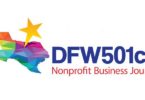This week, we talk about fashion in nonprofit and philanthropy. As a sartorial icon and expert on style, I must say, we need to step up our game. That includes bringing back the codpiece, which has a fascinating history. Basically, according to several minutes of research, the codpiece was invented as a practical solution for preserving people’s modesty as well as to protect armored knights’ nether regions. It then became very fashionable, with Henry the VIII wearing these flamboyant accessories. For a while, you couldn’t step outside without seeing people wearing codpieces, including ones with intricate designs and possibly hidden compartments for keys and maybe a dram of arsenic.
After a while, like many fashion trends such as hoop skirts and giant wigs and bell bottoms, the wearing of codpieces was ridiculed, and the people wearing them were driven into the woods, where they lived a life of shame and contemplation for their horrendous fashion choices. And now, hundreds of years later, no one wears them except maybe at Renaissance fairs and possibly, I imagine, at gyms (I’ve never been to a gym, so I don’t know what people wear there). Read more: What is a codpiece, and should everyone at your organization wear one?
Why am I talking about codpieces? First, because “codpiece” is fun to say, and one can’t have too much knowledge about medieval fashion. But more importantly, the codpiece serves as a great metaphor for our sector and its many practices that were once prominent and even practical, but now should be reconsidered because they are archaic, plain silly, or harmful to our work. Here are a few of them, and if you or your organization or foundation still do any of these things, you might as well have all your board and staff wear codpieces as part of your formal work attire, because you already look ridiculous:
1.Asking the sustainability question: “How will you sustain this program when this grant we give you ends?” I thought this question had been phased out completely because it’s so nonsensical, but apparently not. Last week, the Crappy Funding Practices (CFP) team had to call out a foundation for asking it on their grant application. Funders, if you’re still asking this question, you are as silly as an inebriated goose and should wear a codpiece. For everyone else, if you ever encounter this question, report it to CFP, and then just copy and paste one of these standardized responses I’ve come up with (Seriously, several colleagues have copied and pasted one of the more serious responses, and received funding!)
2.Not disclosing salary range on your job posting: We’ve made tremendous gain in this area, and I hardly ever see a job posting that doesn’t have salary information on it. This is an amazing accomplishment we achieved by speaking up and giving feedback to organizations over the years, so go us! But it does make it more glaring on the occasion when we do see a job listing without the salary. It’s jolting to see a nonprofit or foundation, especially if it professes to believe in equity, to still be engaged in this very backward practice. If you still don’t disclose the salary info in your job postings, everyone at your org should wear a codpiece. And if you also ask for job candidates’ salary history, wear a large powdered wig each because you are acting extra goofy and clueless.
3.Having unpaid internships: Unpaid internships are inequitable, for many reasons. These include punishing people from marginalized backgrounds, rewarding people who are privileged such as having their family support them so they can work for free, harming the career of the unpaid interns, and helping perpetuate the underpaying of nonprofit professionals. They were common in the past, but now they’ve been tapering off, thank goodness. But I just last week encountered an org that was offering them. If you’re still offering unpaid internships, make plans to convert them into paid ones. And immediately pay your interns, including back pay for all the work they’ve already done. Otherwise, wear a codpiece.
…









